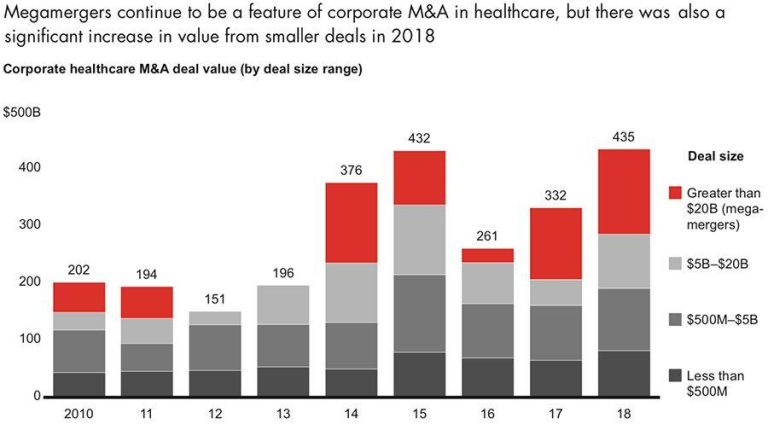Dealmakers are entering the quarter with renewed appetite and sharper risk controls, as steadier financing conditions collide with tougher antitrust scrutiny. Boards under pressure to reignite growth are weighing scale against focus, while activists press for breakups, spinoffs and disciplined capital use.
Expect momentum in tech and semiconductors tied to the AI build-out, ongoing pharma hunts for late-stage pipelines, energy and utilities repositioning for the transition, and continued consolidation in infrastructure-heavy sectors. Private credit remains a pivotal backstop for larger tickets as banks reopen syndication, and cross-border ambitions face heightened national-security reviews.
This roundup highlights the transactions and courtrooms that will set the tone for M&A this quarter-where valuation gaps are narrowing, regulatory risk is the swing factor, and speed to certainty may matter more than price.
Table of Contents
- Antitrust scrutiny at FTC and CMA will stretch timelines for tech and healthcare deals and investors should underwrite longer closings and potential divestitures
- Prioritize software infrastructure carve outs and specialty pharma add ons where sellers accept earnouts and valuation gaps are narrowing
- Watch cross border bids in energy and telecom driven by a strong dollar and easing credit and hedge exposure with disciplined spread trades and targets with clear remedy paths
- To Conclude
Antitrust scrutiny at FTC and CMA will stretch timelines for tech and healthcare deals and investors should underwrite longer closings and potential divestitures
Heightened enforcement in Washington and London is reshaping deal pacing, with the FTC and CMA routinely pushing technology and healthcare combinations into extended Second Requests/Phase 2 reviews and demanding broader remedies around data access, vertical integration, and platform power. Expect more stop-the-clock pauses, parallel information requests, and cross-border coordination that elongate closing paths and increase spread volatility. For this quarter’s watchlist, investors should price in longer closings, negotiate robust risk-allocation, and plan for targeted divestitures-particularly where overlap touches cloud infrastructure, semiconductor/EDA toolchains, digital health, medtech distribution, or pharma services.
- Timelines: Underwrite 12-18 month outside dates with room for re-filings, pull-and-refile cycles, and potential UK “stop the clock” extensions.
- Covenants: Seek strong “hell-or-high-water” language and pre-agreed remedy frameworks, including fix-it-first divestiture packages and identified buyers.
- Consideration mechanics: Add ticking fees, scaled reverse-termination fees, and pricing collars tied to remedy scope and delayed milestones.
- Behavioral safeguards: Model data firewalls, interoperability/API commitments, and trustee oversight as part of settlement architectures.
- Sequencing: Plan staggered closings and carve-outs to ringfence sensitive UK or U.S. assets while awaiting final clearances.
Prioritize software infrastructure carve outs and specialty pharma add ons where sellers accept earnouts and valuation gaps are narrowing
With financing conditions stabilizing and boards shedding non-core assets, buyers are zeroing in on non-core software infrastructure assets and specialty pharma tuck-ins, using earnouts to bridge price expectations as comps reset and bid-ask spreads compress. Expect disciplined processes, tighter ranges, and contingent tranches tied to measurable operating outcomes; carve-out readiness, TSA discipline, and post-close integration plans will differentiate winners this quarter.
- Software infrastructure carve-outs: observability, identity, API management, and DevSecOps modules with >85% gross margin, NRR ≥115%, and durable enterprise contracts.
- Specialty pharma add-ons: rare disease and hospital-administered therapies, complex generics, and 505(b)(2) plays with secured CMO/CDMO capacity and clear reimbursement paths.
- Earnout mechanics gaining traction: 20-40% of EV over 18-36 months, ARR and gross-margin milestones for software; regulatory, launch, and net-revenue triggers for pharma.
- Diligence flashpoints: TSA scope and cost, code/IP ownership and third-party licenses, FDA/EMA timing risk, payer mix, ASP durability, and supply chain resilience.
- Signals the gap is closing: fewer walk-aways, tighter bids, more cash at close with performance tranches, and mezzanine capital reappearing to smooth structures.
Watch cross border bids in energy and telecom driven by a strong dollar and easing credit and hedge exposure with disciplined spread trades and targets with clear remedy paths
Cross-border appetite is back as a stronger dollar and easing credit conditions embolden U.S. strategics and sponsors to pursue energy and telecom assets abroad, tightening risk-arbitrage spreads but rewarding selectivity: focus on transactions with committed financing, meaningful reverse termination fees, and pre-wired remedies that can withstand multi-jurisdictional review; hedge event risk with disciplined, market‑neutral spread trades, stagger entries around regulatory milestones, and prioritize targets where divestiture packages are clear, separable, and supported by credible buyers.
- Sectors to watch: midstream and LNG, renewable platforms, grid and interconnect assets, fiber backbones, towercos, and data centers.
- Flow of funds: dollar‑advantaged U.S. buyers into EU/UK and LatAm; sovereign/infrastructure capital rotating into regulated energy networks.
- Regulatory vectors: EC/DG COMP and UK CMA merger control, national security and FDI screens (including CFIUS‑analogues), sector regulators on spectrum and critical infrastructure.
- Deal‑quality filters: clear remedy paths with ring‑fencing/divestiture options, pre‑consultation with authorities, robust break fees, long‑stop dates with ticking fees, and “hell‑or‑high‑water” commitments where concentration is high.
- Hedging playbook: pair trades against peers or indices, basket hedges for regulatory beta, staged sizing around Phase I/II deadlines, and explicit break‑price discipline.
- Catalysts/risks: rate‑cut expectations and loan/HY syndication reopenings vs. election calendars, FX basis costs, and public‑interest undertakings in energy security and telecom coverage.
To Conclude
As the quarter unfolds, the M&A tape will turn on a handful of binary catalysts: regulatory rulings, shareholder votes and financing syndications. Antitrust scrutiny remains the swing factor, with timetables in major jurisdictions likely to shape both pricing and the pace of announcements.
Dealmakers will also be watching credit markets for signs of stability as leveraged loans and high-yield reopen, a key test for larger, debt-heavy transactions. Any shifts in rates, spreads or earnings guidance could recalibrate valuations and tilt negotiating leverage.
For now, execution risk-more than appetite-will define outcomes. Keep an eye on court calendars, go-shop windows and ticking fees as the next milestones arrive; they will determine which headline deals close and which become case studies for the next cycle.


